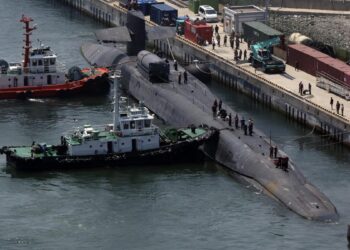
The United Nations’ cultural agency decided to add the historic centre of Ukraine’s Black Sea port city of Odesa to the list of World Heritage in danger. The decision was made at an extraordinary session of the World Heritage Committee in Paris.
| Photo Credit: AP
The United Nations’ cultural agency, UNESCO, said on Wednesday that it had designated the historic centre of Odesa, a strategic port city on Ukraine’s Black Sea coast, a World Heritage in Danger site.
Russia, which invaded Ukraine 11 months ago, denounced the designation, saying the only threat to Odesa came from the “nationalist regime in Ukraine”.
The status, awarded by a UNESCO panel meeting in Paris, is designed to help protect Odesa’s cultural heritage, which has been under threat since Russia’s invasion, and enable access to financial and technical international aid.
Odesa has been bombed several times by Russia since its invasion of Ukraine on February 24, 2022.
In July 2022, part of the large glass roof and windows of Odesa’s Museum of Fine Arts, inaugurated in 1899, were destroyed.
In a statement, UNESCO Director General Audrey Azoulay said that Odesa, “free city, world city, legendary port” had made its mark on cinema, literature and the arts.
“As the war continues, this inscription reflects our collective determination to protect this city from greater destruction,” Azoulay said.
Explained | The next leg of the Russia-Ukraine war
Ukrainian President Volodymyr Zelenskiy said the decision “will help us protect our Odesa … Russia is incapable of defending anything other than terror and strikes.”
Earlier on Wednesday, UNESCO inscribed the Landmarks of the Ancient Kingdom of Saba, Marib in Yemen and Rachid Karami International Fair-Tripoli in Lebanon to its list of World Heritage in Danger sites.
Russia: Ukraine the sole threat to Odesa
Russia’s Foreign Ministry said it had no quarrel with the decision to celebrate and protect Odesa’s legacy.
“But this requires a clarification that the sole threat to the city’s rich history stems from Ukraine’s nationalist regime which systematically destroys monuments to the founders and defenders of Odesa,” it said in a statement.
It cited in particular a monument to Russian Empress Catherine the Great – widely reputed to be the city’s founder – that was dismantled by an order of city authorities last year.
The UNESCO debate over Odesa took hours as Russia unsuccessfully tried to have the vote postponed.
Founded in the final years of the 18th century, near the site of a captured Ottoman fortress, Odesa’s location on the shores of the Black Sea allowed it to become one of the most important ports in the Russian empire.
Its status as a trading hub brought significant wealth and made it one of the most cosmopolitan cities in Eastern Europe.
A man walks next to the Opera Theatre building in the city centre, amid Russia’s attack on Ukraine, in Odesa.
| Photo Credit:
Reuters
The city’s most famous historic sites include its Opera House, which became a symbol of resilience when it reopened in June 2022, and the giant stairway to the harbour, immortalised in Sergei Eisenstein’s 1925 silent film Battleship Potemkin.
Although the city suffered significant damage in World War Two, its famed central grid square of low-rise 19th century buildings survived mostly intact.
Odesa was a key Ukrainian tourist hub before Russia’s invasion. War changed all that, as the Black Sea became a battlezone. Sea mines still wash up near the city’s shoreline.
















